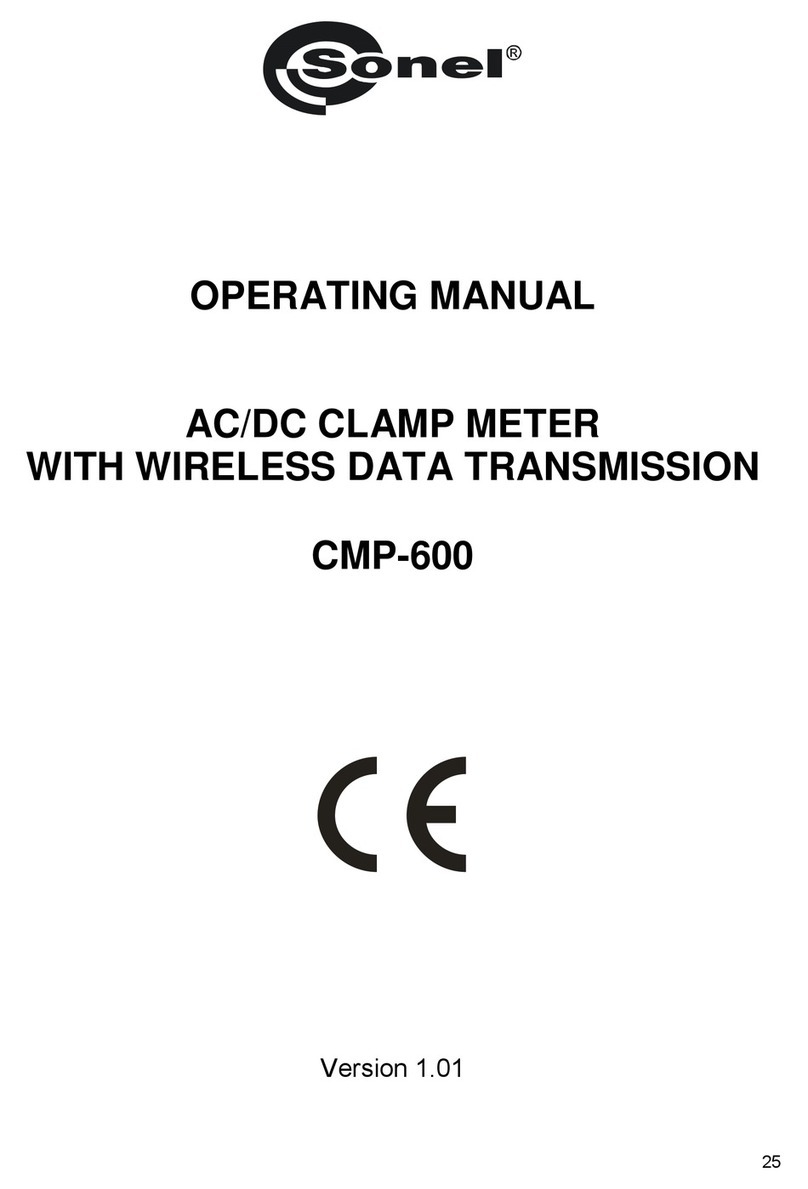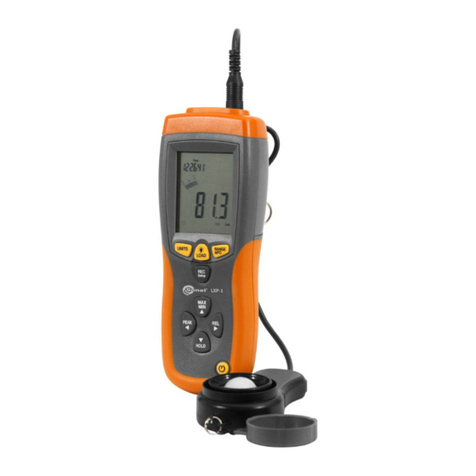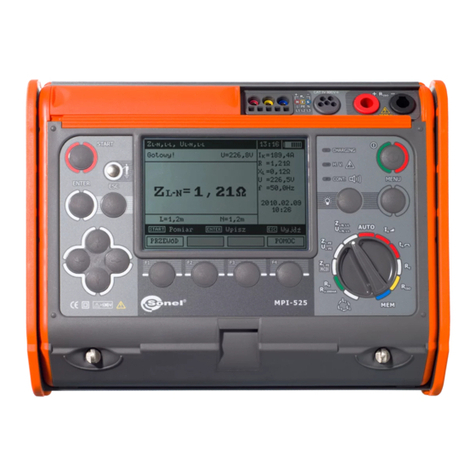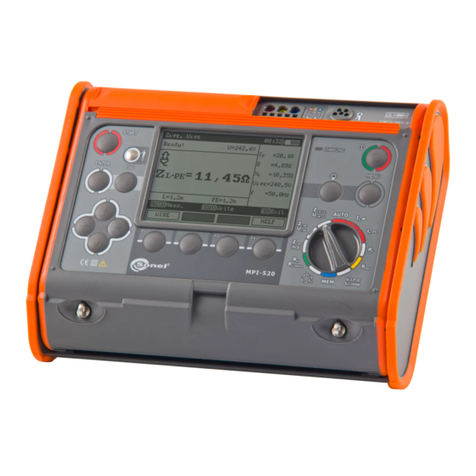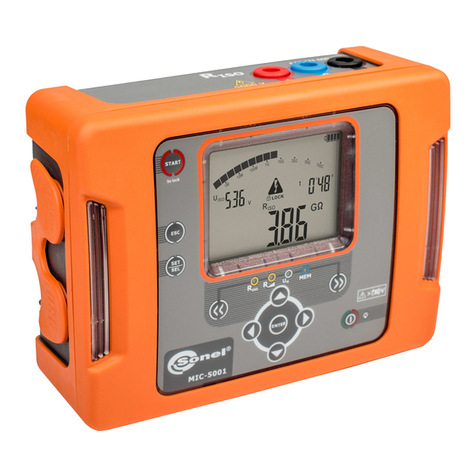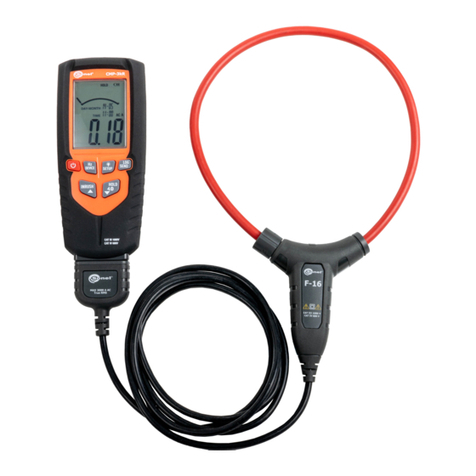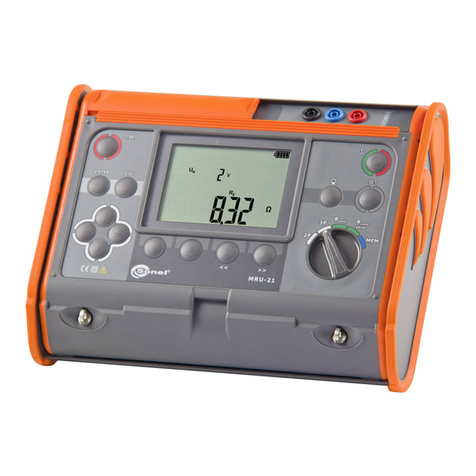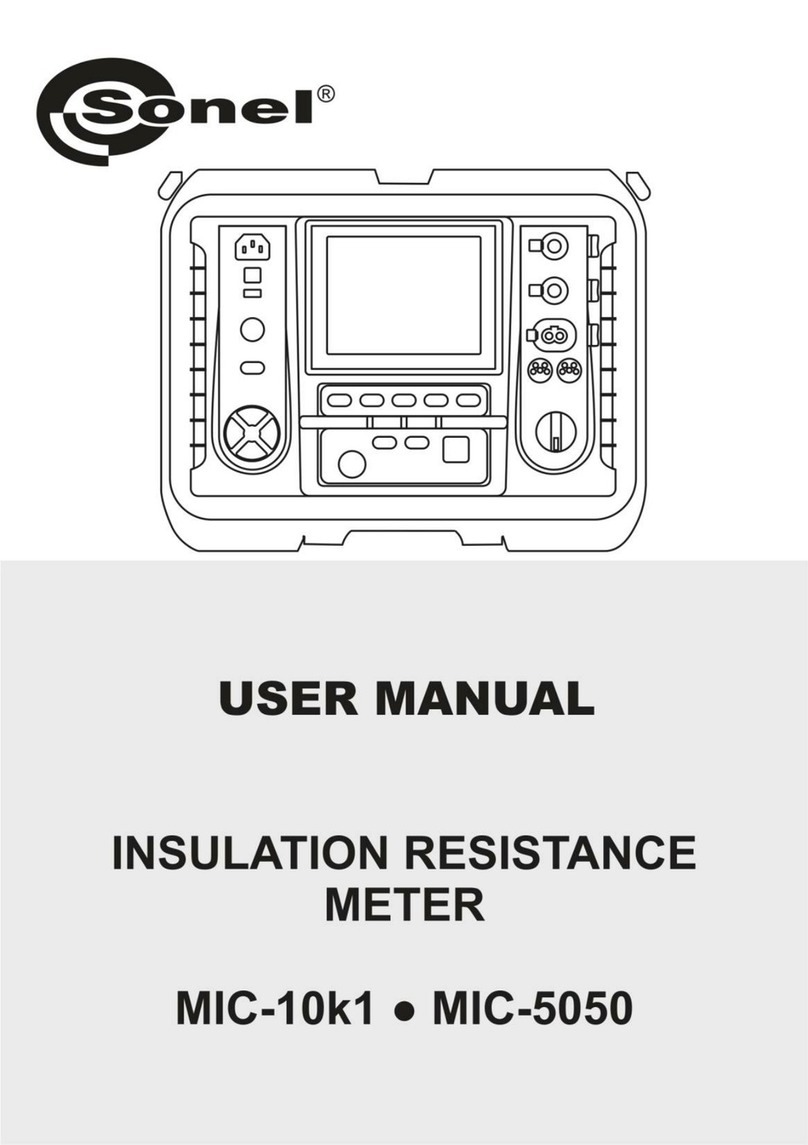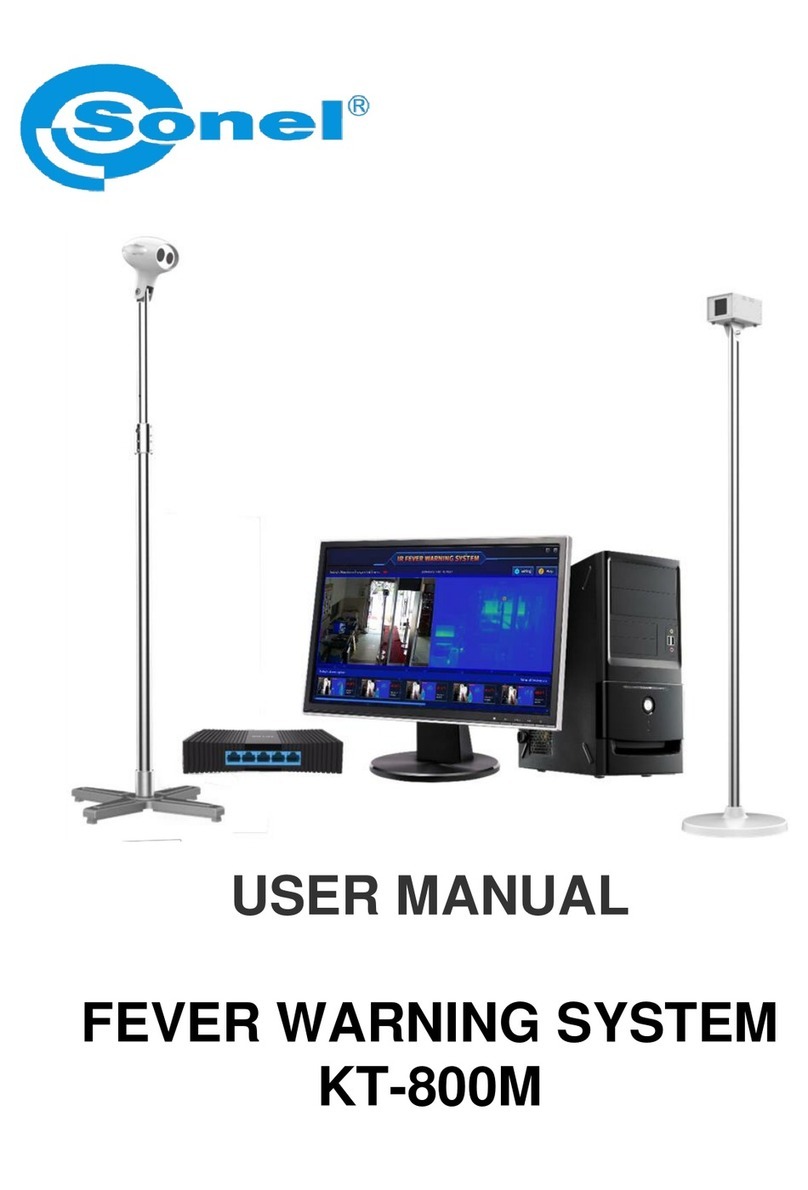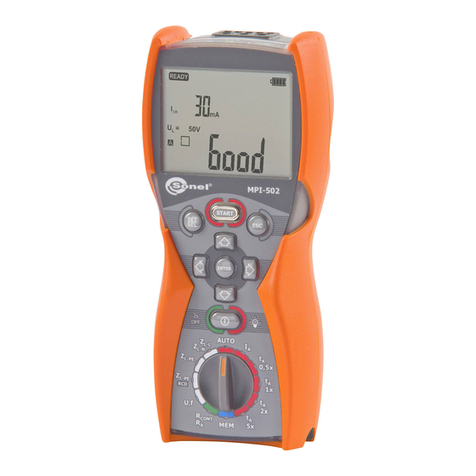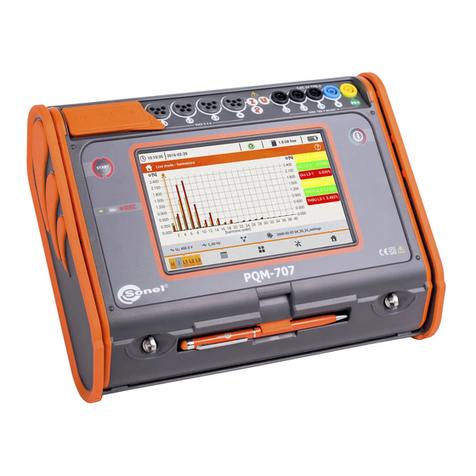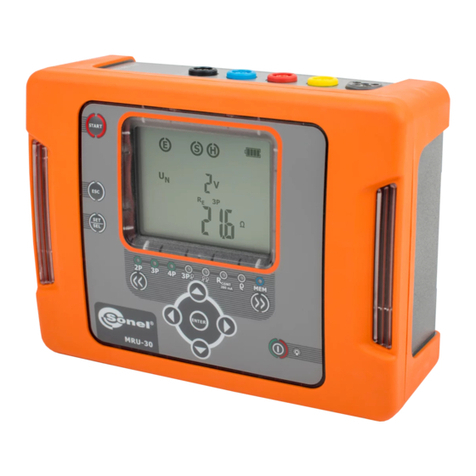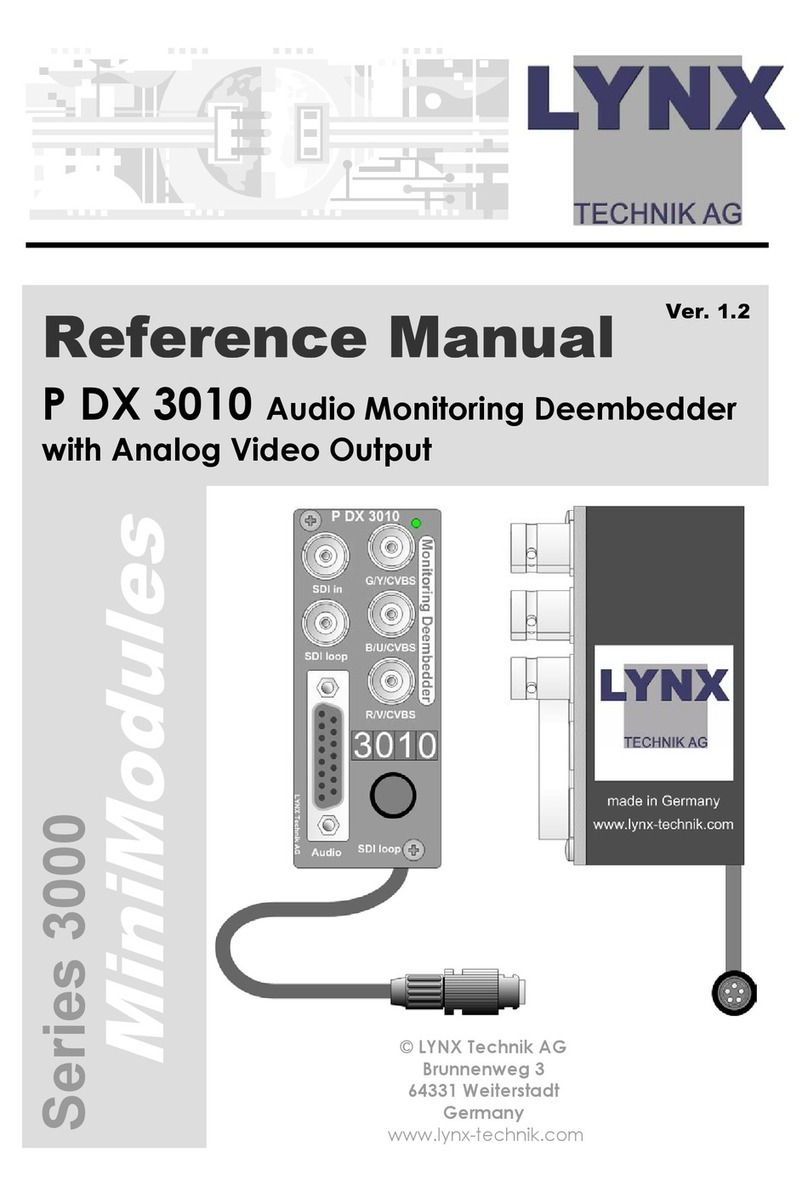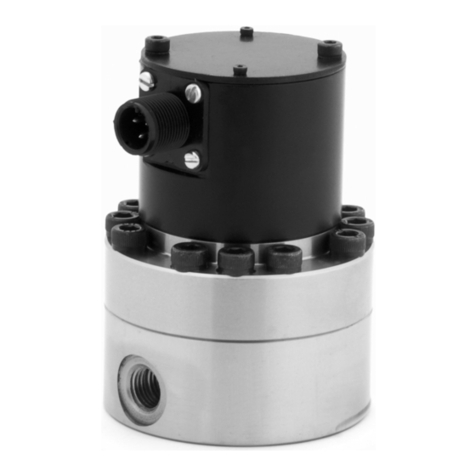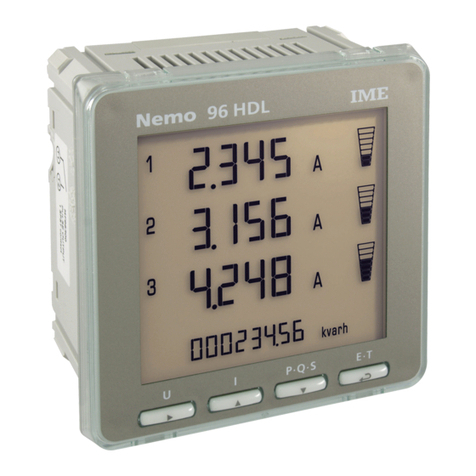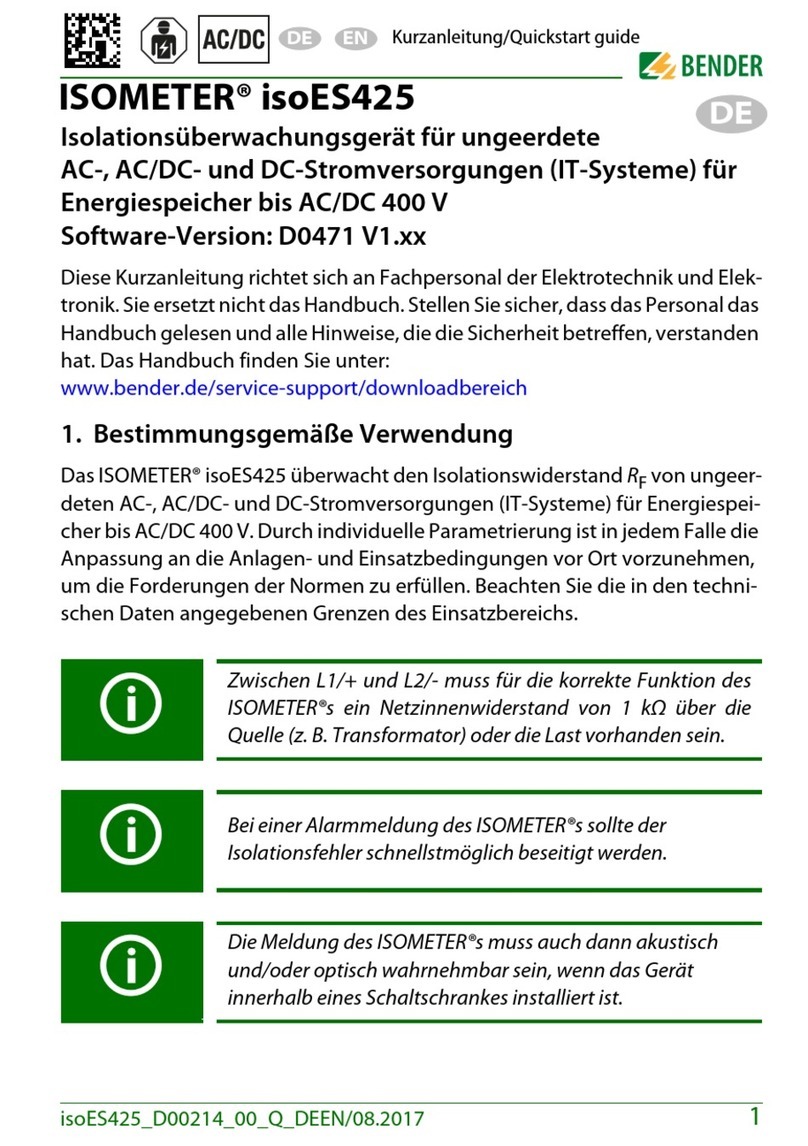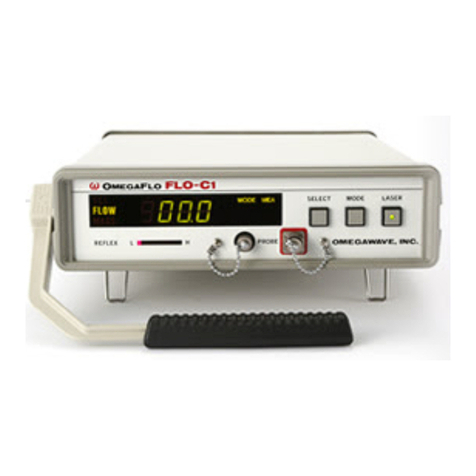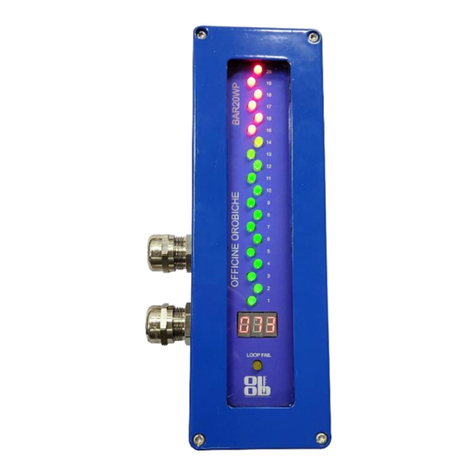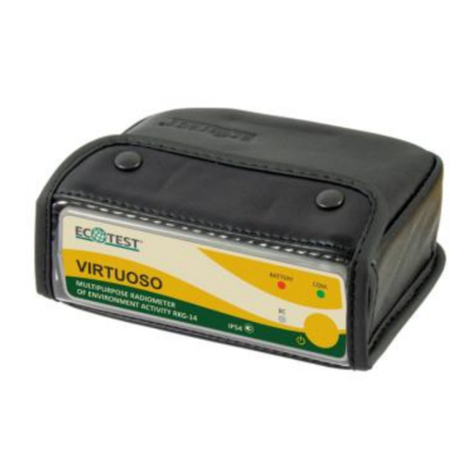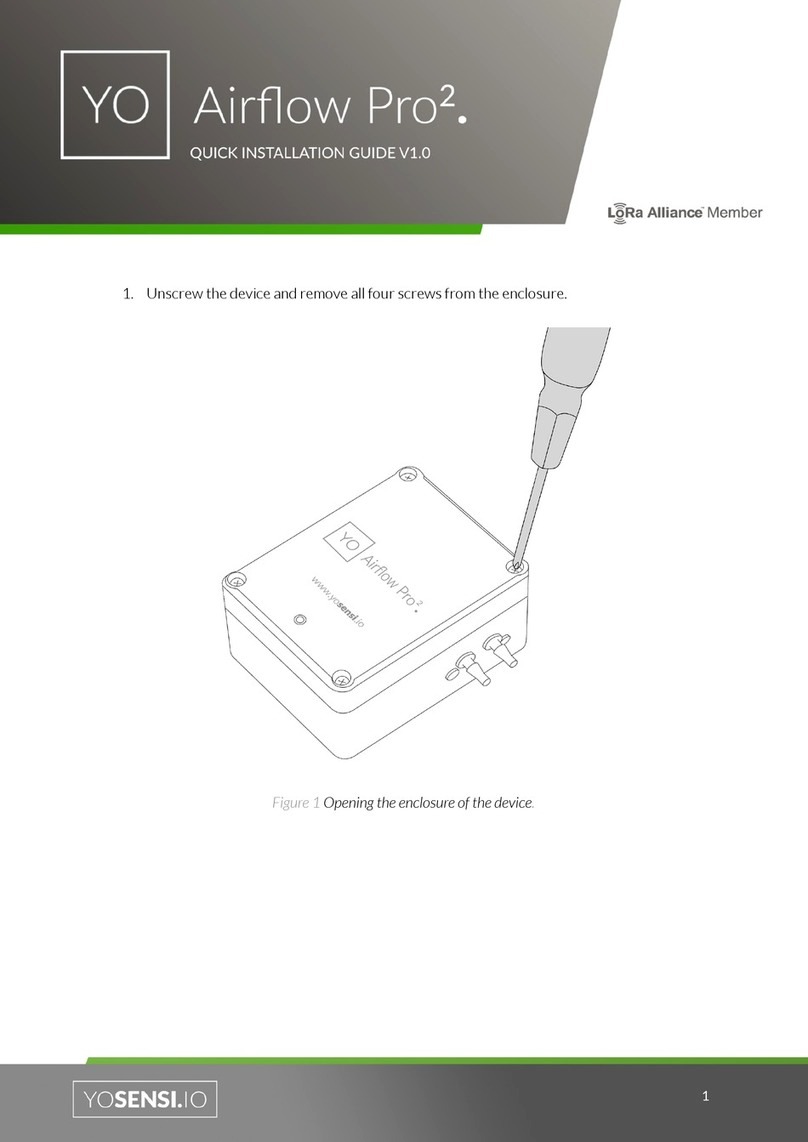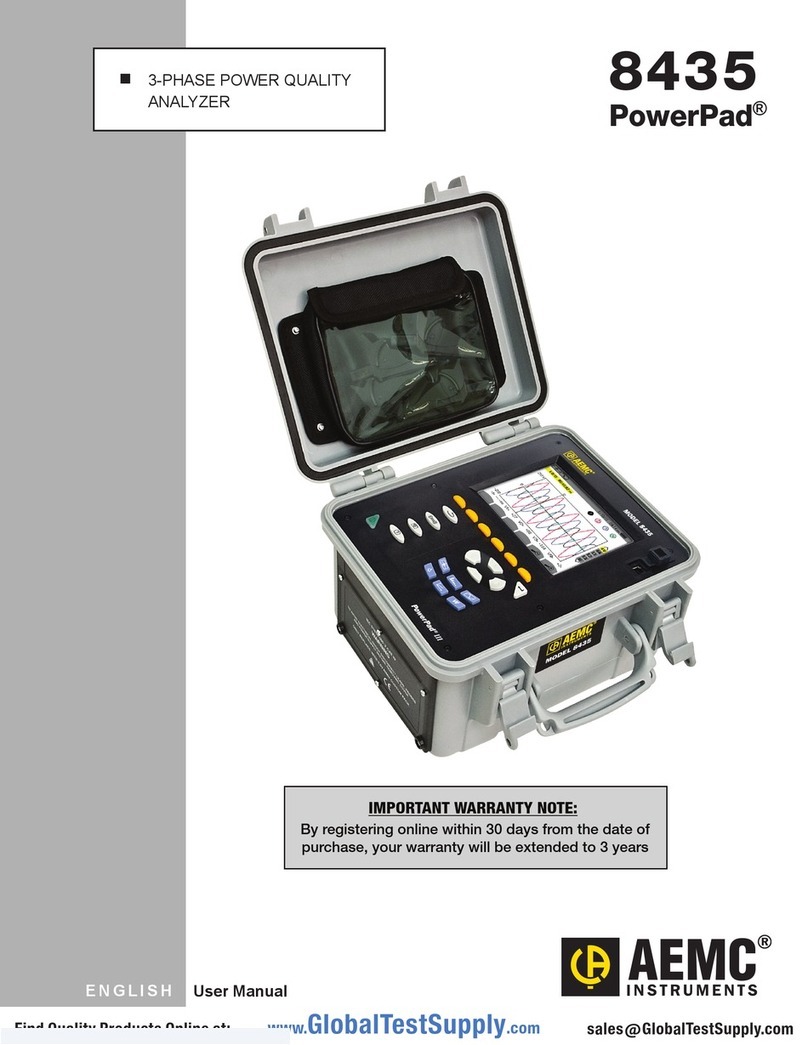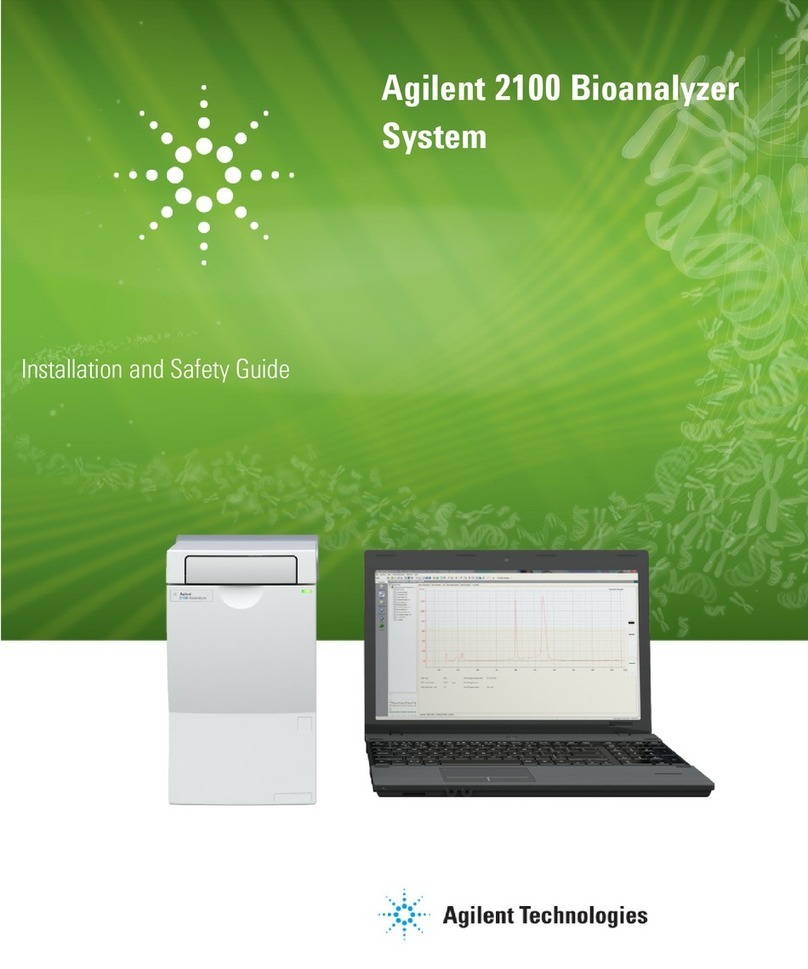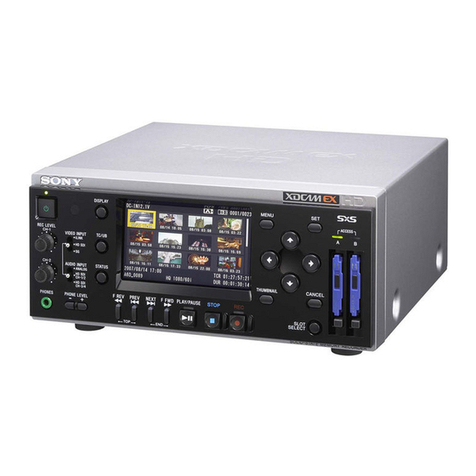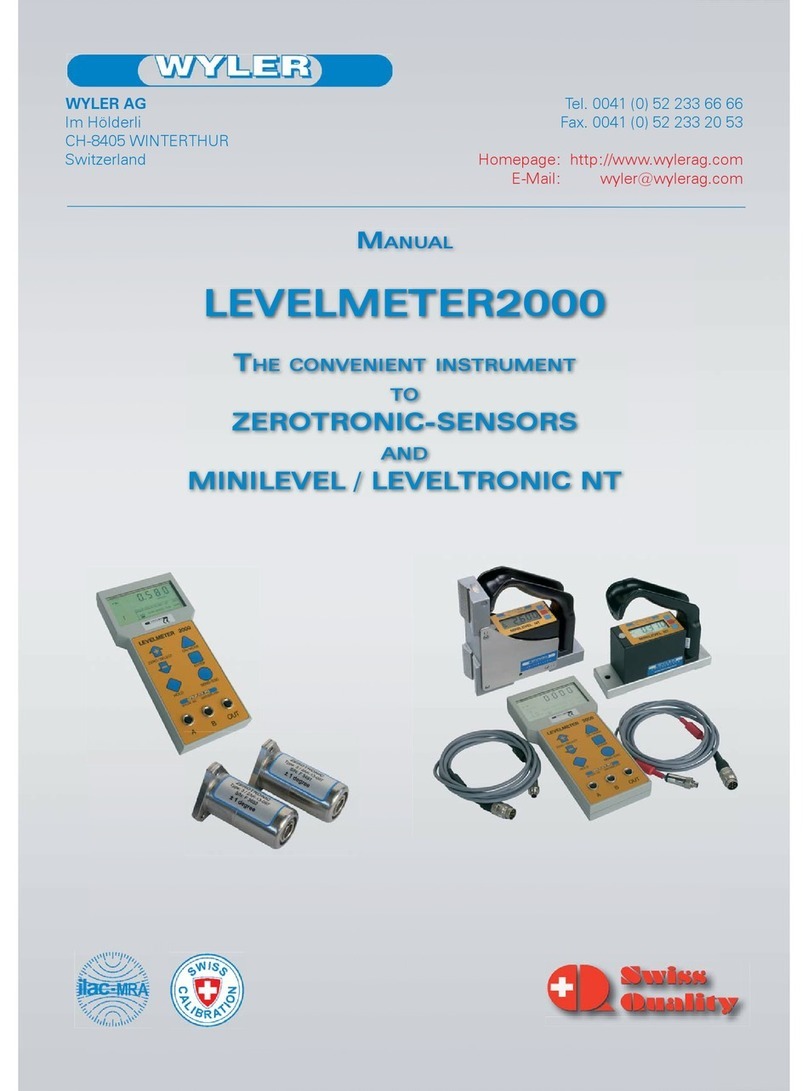Sonel PAT-1 User manual



OPERATING MANUAL
PORTABLE APPLIANCE TESTERS
PAT-1, PAT-2, PAT-2E and PAT-10
SONEL S. A.
11 Wokulskiego Str.
58-100 Świdnica, Poland
Version 1.02 22.05.2017

The PAT-1/2/2E/10 testers are a modern, high quality, easy to use and safe measuring devices.
Please acquaint yourself with the present manual in order to avoid measuring errors and prevent
possible problems related to operation of the testers.

OPERATING MANUAL PAT-1, PAT-2, PAT-2E, PAT-10 version 1.02
3
TABLE OF CONTENTS
1SAFETY...................................................................................................................5
2SWITCHING ON AND ACTIVATING SCREEN BACKLIT............................6
2.1.1 The first startup................................................................................................7
2.1.2 Additional information displayed by the tester................................................7
3TESTER CONFIGURATION................................................................................9
4MEASUREMENTS...............................................................................................17
4.1 INTRODUCTION .....................................................................................................17
4.2 MANUAL TESTS.....................................................................................................18
4.2.1 Preliminary test –visual inspection...............................................................19
4.2.2 Measurement of PE protective conductor resistance - RPE............................21
4.2.3 Measurement of insulation resistance - RISO..................................................24
4.2.4 Measurement of substitute leakage current - ISUB..........................................26
4.2.5 Measurement of differential leakage current - IΔ(only PAT-2E and
PAT-10)..........................................................................................................29
4.2.6 Measurement of touch leakage current –IT (only PAT-2E and PAT-10)......31
4.3 AUTO MODE TESTS –CLASS I ..............................................................................34
4.4 AUTO MODE TESTS –CLASS II.............................................................................39
4.5 TESTING EXTENSION CORDS AND IEC (POWER SUPPLY)CABLES ...........................45
4.6 MEASUREMENT OF PORTABLE RESIDUAL CURRENT DEVICE TRIP TIME –PRCD
(ONLY PAT-2E AND PAT-10)...............................................................................50
4.7 COMPENSATION OF THE TEST LEAD’S RESISTANCE (AUTO-ZEROING).....................55
5MEMORY OF MEASUREMENT RESULTS....................................................57
5.1 STORING THE MEASUREMENT RESULTS IN THE MEMORY.......................................58
5.2 BROWSING MEMORY DATA....................................................................................59
5.3 DELETING MEMORY DATA.....................................................................................60
5.3.1 Deleting cel data............................................................................................60
5.3.2 Deleting bank data.........................................................................................62
5.3.3 Deleting the entire memory data....................................................................63
6LABEL PRINTING...............................................................................................65
6.1.1 Printer configuration .....................................................................................65
6.1.2 Printing after measurement ...........................................................................68
6.1.3 Printing from memory....................................................................................68
6.1.4 Printing automatically when saving to memory.............................................68
6.1.5 Label types.....................................................................................................69
6.1.6 Printout data configuration with PC software...............................................70
6.1.7 Placing the printer inside a carrying case.....................................................70

OPERATING MANUAL PAT-1, PAT-2, PAT-2E, PAT-10 version 1.02
4
7DATA TRANSMISSION ......................................................................................71
7.1 ACCESSORIES REQUIRED TO CONNECT THE TESTER TO PC.....................................71
7.2 DATA TRANSMISSION AND TESTER CONFIGURATION VIA USB PORT ......................71
8FIRMWARE UPDATE.........................................................................................72
9POWER SUPPLY OF THE TESTER .................................................................72
9.1 MONITORING THE POWER SUPPLY..........................................................................72
9.2 CHARGING THE RECHARGEABLE BATTERY PACK ...................................................73
9.3 GENERAL PRINCIPLES OF USING NI-MH BATTERIES ...............................................74
10 REPLACING FUSES............................................................................................74
11 CLEANING AND MAINTENANCE...................................................................75
12 STORAGE..............................................................................................................75
13 DISMANTLING AND DISPOSAL......................................................................75
14 TECHNICAL SPECIFICATIONS.......................................................................76
15 ACCESSORIES .....................................................................................................81
15.1 STANDARD ACCESSORIES ...................................................................................81
15.1.1 Standard set (PAT-1)...................................................................................81
15.1.2 Standard set (PAT-2, PAT-2E, PAT-10) .....................................................81
15.2 ADDITIONAL ACCESSORIES .................................................................................81
16 MANUFACTURER...............................................................................................82
17 TESTING AND CALIBRATION LABORATORY ...........................................83

OPERATING MANUAL PAT-1, PAT-2, PAT-2E, PAT-10 version 1.02
5
1 Safety
The PAT-1, PAT-2, PAT-2E and PAT-10 testers are designed for performing check tests on electrical
equipment, providing measurement results which determine the safety status of tested devices.
Therefore, in order to provide conditions for correct operation and the correctness of the obtained re-
sults, the following recommendations must be applied:
Before you commence operating the tester, acquaint yourself thoroughly with the present manual
and observe the safety regulations and specifications determined by the manufacturer.
Any application that differs from those specified in the present manual may result in a damage to
the device and constitute a source of danger for the user.
PAT testers must be operated only by appropriately qualified personnel. Operating the tester by
unauthorized personnel may result in damage to the device and constitute a source of danger for
the user.
The instruments must not be used with installations or equipment situated in dangerous
environments, e.g. where fire or explosion hazards exist.
It is forbidden to operate the following:
A damaged tester which is completely or partially out of order,
A tester with damaged test leads insulation,
A tester stored for an excessive period of time in disadvantageous conditions (e.g. excessive
humidity). If the tester has been transferred from a cool to a warm environment with a high
level of relative humidity, do not start measurements until the tester is warmed up to the
ambient temperature (approximately 30 minutes).
The tester may be powered only from grounded mains sockets. The tester can’t be powered from
other sources than those mentioned in this manual.
Before starting any measurement, make sure the test leads are connected to the
proper test sockets.
Do not touch the tested device during measurements.
Test sockets and the socket for testing IEC cables are protected against improper
connection to the voltage up to 300V AC for 60 seconds.
Repairs may be carried out only by an authorised service point.
Using this manual does not exclude the need to comply with occupational health and safety regu-
lations and with other relevant fire regulations required during the performance of a particular type
of work. Before starting the work with the device in special environments, e.g. potentially fire-
risk/explosive environment, it is necessary to consult it with the person responsible for health and
safety.
Note:
Manufacturer reserves the right to apply changes in the appearance, accessories and
technical parameters of the testers. Due to continuous development of the testers’ soft-
ware, the actual appearance of the display, in case of some of the functions, may slightly
differ from the display presented in this operating manual.
Note:
An attempt to install drivers in 64-bit Windows 8 may result in displaying ‘Installation
failed’ message.
Cause: Windows 8 by default blocks drivers without a digital signature.
Solution: Disable the driver signature enforcement in Windows.

OPERATING MANUAL PAT-1, PAT-2, PAT-2E, PAT-10 version 1.02
6
2 Switching on and activating screen backlit
Turn on the tester with button.
Short press button to turn the
screen backlight on; press the button
again to turn the backlight off. When
the tester is connected to the mains it
automatically turns on the screen back-
lit upon start up.
Switch off the meter by pressing and
and holding button for approx. 2
seconds.
Emergency
situations
Pressing button for approx. 7
seconds will turn off and on (reset) the
tester. Mains power supply must be
disconnected while resetting.
After switching on, the tester displays the firmware version on screen - FXXX (where 'XXX' is the
firmware number). Then it performs a self-test, during which the test screen is displayed along with
the progress bar:
measurement of the voltage in the power supply socket, i.e. the voltage between L and
N of power supply to the tester,
measurement of mains frequency,
measuring the voltage between N and PE in the power supply socket,
indicates swapped L and N terminals (icon on the screen).
Upon completing above self-check procedure, when everything is correct, the tester goes to the
screen of the function that was on before the tester was switched off.
When the tester that is connected to mains, is switched off, it stays in a battery charging mode. In or-
der to completely switch off the device, the mains plug must be disconnected and the tester must be
switched off (see more in chapter 9 of this manual).

OPERATING MANUAL PAT-1, PAT-2, PAT-2E, PAT-10 version 1.02
7
2.1.1 The first startup
The firmware selection window is display upon the first start-up of the tester. The selection of the
firmware version is a one-time exercise and it is remembered until resetting the tester to the factory
settings. The versions may differ in measurement and printout settings. Standard available options
are:
- PL –version for users in Poland,
- En –English version.
Use and buttons to select the ver-
sion of the tester's interface (Software).
Press ENTER button to save selection.
2.1.2 Additional information displayed by the tester
Information that are or can be displayed during operation of the tester (in all measurement functions,
configuration screens and others):
+ audible signal + LED diodes flashing
red
Voltage UN-PE > 25 V or lack of PE continuity, measurements
are blocked.
+ audible signal + LED diodes flashing
red
Mains frequency is incorrect, measurements are blocked.
(Bad frequency)

OPERATING MANUAL PAT-1, PAT-2, PAT-2E, PAT-10 version 1.02
8
+ audible signal + LED diodes flashing
red
Mains voltage > 265 V, measurements are blocked.
+ audible signal + LED diodes flashing
red
Voltage on the test sockets >25 V, measurements are
blocked. Disconnect the tested device with caution.
+
The allowable inside temperature of the tester has been ex-
ceeded. Wait until the temperature drops (symbol disap-
pears) and start measurements again.
Symbol: (flashing)
Connect mains power supply to run the test.
Symbol:
Mains power supply connected, power supply polarity is cor-
rect.
Symbol:
Incorrect polarity of power supply, swapped L and N in the
power supply socket of the tester. PAT automatically swaps
L and N in the tester’s test socket, and measurements are
possible.
In order to properly perform the measurement, connect the
measurement probe to the tested device.
Refer to user manual.
In selected measurement function (or autotest with subse-
quent tests in it) after commencing measurement a danger-
ous voltage, from following source, is present: mains - the
device under test will turn on, or a voltage generated during
insulation resistance test (eg. 500V).
ErrX
An error has been detected. Contact authorized service
point. 'X' refers to an error code.
turn on Prcd
Turn on the tested Portable Residual Current Device.
The tester can also display a number of other notifications, which are assigned to the different func-
tions of the tester and have been described further in this manual.

OPERATING MANUAL PAT-1, PAT-2, PAT-2E, PAT-10 version 1.02
9
3 Tester configuration
The tester configuration can also be performed using PC software.
Turn on the tester by pressing and
keeping SET/SEL button pressed.
When the rtSt (re test) screen is dis-
played use and buttons to set the
retest time (in months). Based on this in-
formation the tester will calculate the re-
test time that will show up on the printout.
Select oFF to switch off this function.
Use and to enter the autotest con-
figuration screen: Atst.
When Atst (Autotest) screen is displayed
use and to turn the tests to be per-
formed automatically: on ( +
) or off ( ).
Use and buttons to enter the
screen with audio message settings:

OPERATING MANUAL PAT-1, PAT-2, PAT-2E, PAT-10 version 1.02
10
bEEP.
When bEEP screen is displayed use
and to turn the audio messages ON
() or OFF ( ).
Press and to switch to auto off set-
ting screen (Auto-off): AoFF
Use and to set the time period af-
ter which the tester will turn off automati-
cally (Auto-off): 300 s, 600 s, 900 s or
none (dashes - Auto-OFF is disabled).
This function turns off the unused tester
automatically after the certain (set by user)
period of time.
Use and buttons to enter the
screen for activating WiFi wireless com-
munication –(Radio Function): rF (not ap-
plicable for PAT-1).

OPERATING MANUAL PAT-1, PAT-2, PAT-2E, PAT-10 version 1.02
11
When rF screen is displayed use and
to set the wireless connection: on ( +
icon) or off ( ).
Use and buttons to enter the
screen with report printing settings- (Print):
Prnt (not applicable for PAT-1).
Use and buttons to set the report
printing mode: standard report ( ), full
report ( ) or printing disabled ( ).
NOTE: The printing function will work only
when the wireless communication function
'rF' is activated, and the connection with
the printer is configured properly (Prnt
Conf).
Use and to enter the screen with
auto print mode settings after saving
measurement results to memory - (Auto-
Print): APrn (not applicable for PAT-1).

OPERATING MANUAL PAT-1, PAT-2, PAT-2E, PAT-10 version 1.02
12
Use and to turn the auto print
mode: on ( ) or off ( ).
NOTE: The auto print mode will work only
when the wireless communication function
'rF' is activated, and the connection with
the printer Prnt is configured properly.
Use and to enter the printer connec-
tion settings screen - (Printer configura-
tion): Prnt Conf
Press ENTER to go to the code entry screen
(codE) that allows to establish the connection
(These are the last four digits of the printer's
serial number). Detailed configuration de-
scription is presented in section 6.1.1 of this
manual.
Use and to enter the screen for set-
ting nominal network voltage powering the
tester - (Unominal): Un

OPERATING MANUAL PAT-1, PAT-2, PAT-2E, PAT-10 version 1.02
13
When the Un screen is displayed use
and to set the nominal mains voltage
value: 220 V, 230 V or 240 V.
Use and to enter the screen with
the mains frequency selection - (Fre-
quency): Fr
When the Fr screen is displayed use
and to set the nominal mains frequen-
cy value: 50 Hz or 60 Hz.
Use and to enter the screen where
the L-N resistance test can be switched
on/off before the visual test - (Resistance
L-N): r Ln (RL-N)

OPERATING MANUAL PAT-1, PAT-2, PAT-2E, PAT-10 version 1.02
14
When the r Ln screen is displayed use
and to turn: on ( ) or off ( ).
Use and to enter the screen that al-
lows to select the tester's response when
the L and N are swapped in the polarity
test of IEC cord: IEC
When the IEC screen is displayed
use and to set the outcome result
for swapped L and N: Negative test result
(FAIL) or set the tester to allow swapped L
and N lines (PASS).
Use and to enter the screen where
time and date can be set - (Date): DAtE

OPERATING MANUAL PAT-1, PAT-2, PAT-2E, PAT-10 version 1.02
15
Press ENTER to enter the date setting mode
(date format is DD/MM/RRRR):
When in the date setting mode, the digit
representing a day is flashing. Use
and to set the correct day number.
Use and to go to the month and the
year selection and set these numbers in
the same way as the day.
When the date is set press ENTER to save
changes and move to 24h time mode set-
tings.

OPERATING MANUAL PAT-1, PAT-2, PAT-2E, PAT-10 version 1.02
16
When the clock screen is displayed, the
hour digit is flashing. Use and to
set the proper value.
Use and to go to minutes settings
and set the proper value in the same
manner.
Press ENTER to save changes and return to
the SET menu.
Use and to go to factory reset
screen –(Factory settings): FAct SEtt
Press Enter to go to the reset confirmation
screen of the tester settings, the ConF mes-
sage is displayed. Press ENTER again to
reset the tester to default factory settings.
Use and buttons to enter the
screen with firmware update: UPdt.

OPERATING MANUAL PAT-1, PAT-2, PAT-2E, PAT-10 version 1.02
17
Press ENTER to enter the update mode. The
update process is described in section 8.
After changing the parameters, you may exit SETUP menu:
Press and hold ENTER button for approx. 2 s
to memorize settings (not applicable for Up-
date screen)
or use ESC button (2s) to go to the meas-
urement screen without confirming the
changes.
4 Measurements
Note:
The test parameters’ settings (times, limits, others) presented in this manual
are exemplary, and may differ from the ones pre-set in the tester.
Some tests require mains power supply, and will not run until the tester is connected to mains (plug
symbol is flashing). Connect the tester to mains power supply to run the test.
During the measurement the tested appliance must be switched on.
4.1 Introduction
Beyond all doubt, safe use of machinery and equipment is the responsibility of the owner (company
owner, home user), therefore, to state that the equipment is safe, regular checks and tests should be
performed, based on the approved standards, appliances' user manuals.Tested appliances labelled
as out of order, or the ones with expired check-up dates, should be immediately withdrawn from use.
It is forbidden to use damaged or faulty work tools and safety equipment.
Note that not only power tools should be tested. Extension cords, office and kitchen equipment or
production machines are equally prone to damage. These items are frequently exposed to damage,

OPERATING MANUAL PAT-1, PAT-2, PAT-2E, PAT-10 version 1.02
18
especially when used at construction sites or in other severe conditions. Apart from mechanical im-
pacts, damage may also be caused by e.g. high external temperature or internal overheating due
to high current flow. Extreme temperatures are the major cause of deterioration. Therefore extension
or power supply cord should be frequently tested.
Very important part of the test is the visual examination. After the visual check is done, electrical
safety tests are to be performed. It is for the user (owner) to decide about test intervals. Frequent
testing of equipment improves their operating safety.
Electrical devices and power tools are divided into three protection classes –depending on the meth-
od employed in designing power tools to ensure their electric shock protection:
Class I - in addition to the basic insulation, all metallic parts are connected with PE protection
wire in such a manner that, in the event of insulation damage, they may not become live.
Class II –power tools without the PE protection wire, but double, or reinforced insulation is re-
quired in addition to the basic one. With proper insulation, the enclosure can also be made out of
metal.
Class III - power tools of this class are supplied by circuits with very low voltage, the value of
which may not exceed:
- 50V(AC) or 120V(DC) - in normal conditions;
- 25V(AC) or 60V(DC) - in case of more hazardous conditions;
- 12V(AC) or 30V(DC) - in case of special hazards.
PAT series testers allow to perform tests in single or in auto-test mode - a testing procedure consist-
ing of several, different test types that are subsequently carried out one after another. Manual tests
are available under button, auto tests are available under:
- measuring procedure for Class I appliances.
- measuring procedure for Class II appliances (can apply for the majority of the Class
III appliances).
- measurement procedure for IEC power cords, extension cords, and oter power
cords.
Additionally the tester allows to measure parameters of portable residual-current devices, PRCD
(stand alone portable RCDs or the ones built into extension cords, switchgears, etc.). This function is
available under button (only PAT-2E and PAT-10).
Measurement settings can be done through SET menu or by using PC software.
4.2 Manual tests
In the manual mode, all the test types supported by the tester can be performed. Press
button (LED is on) to switch between all available tests (except for PRCD and IEC
This manual suits for next models
3
Table of contents
Other Sonel Measuring Instrument manuals
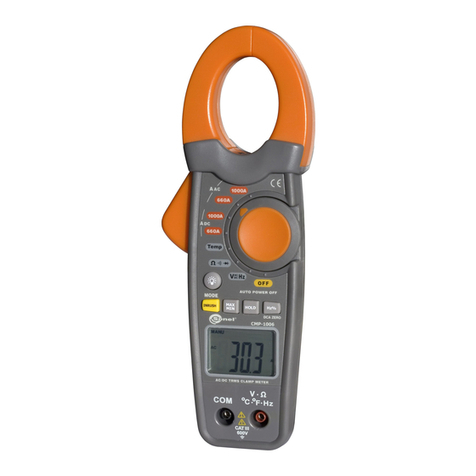
Sonel
Sonel CMP-1006 User manual
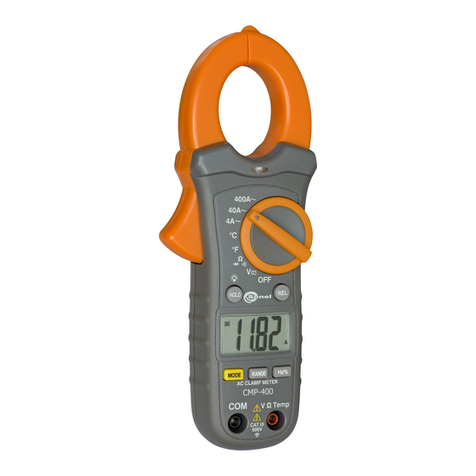
Sonel
Sonel CMP-400 User manual
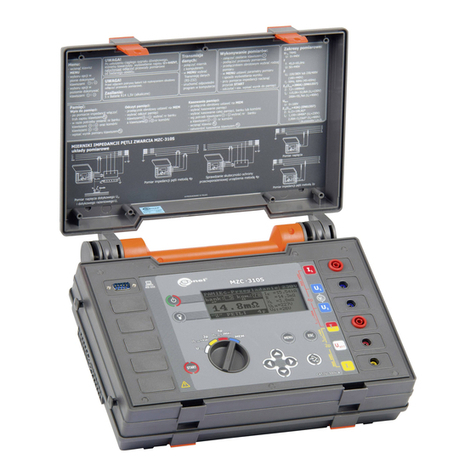
Sonel
Sonel MZC-310S User manual
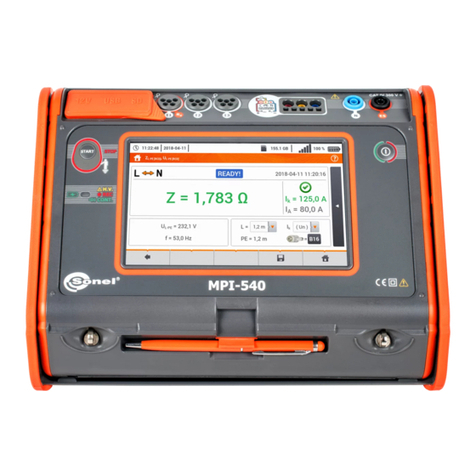
Sonel
Sonel MPI-540 User manual
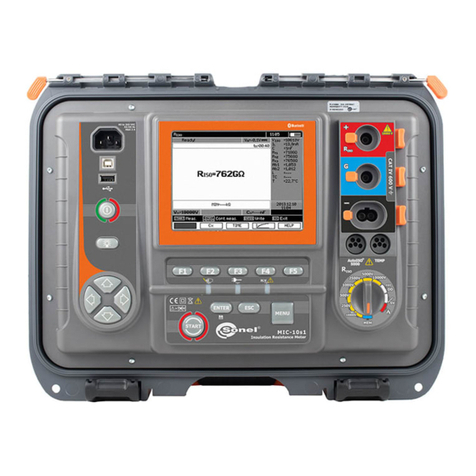
Sonel
Sonel MIC-10s1 User manual
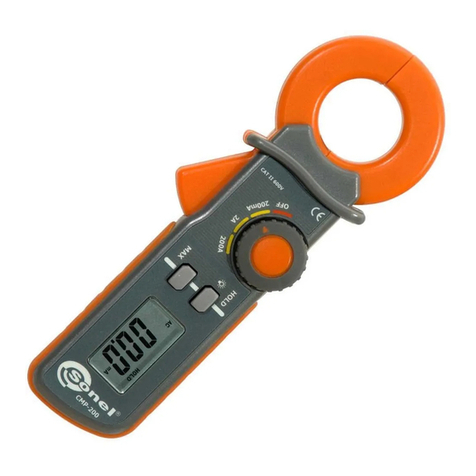
Sonel
Sonel CMP-200 User manual
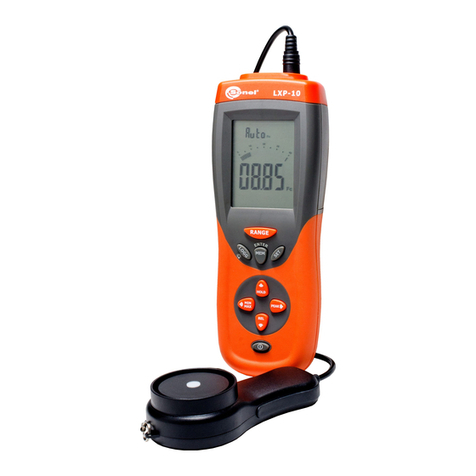
Sonel
Sonel LXP-10B User manual
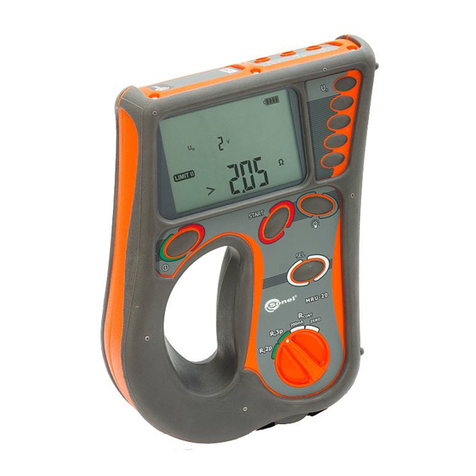
Sonel
Sonel MRU-20 User manual

Sonel
Sonel MPI-540 User manual
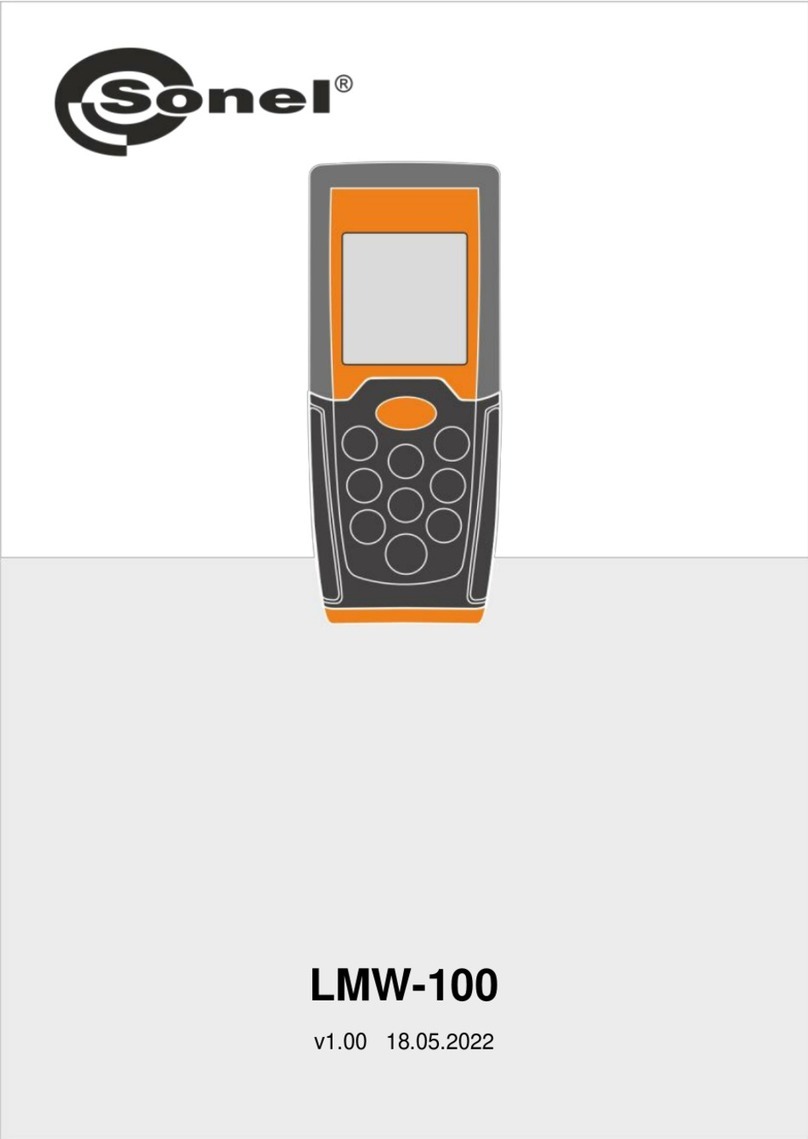
Sonel
Sonel LMW-100 User manual
